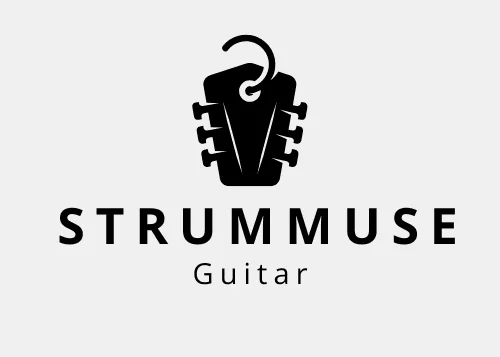Quick Summary: Fingerstyle guitar involves plucking strings individually with your fingers, while strumming is about brushing across strings to create rhythm. Both have unique strengths depending on the musical context and your goals as a player.
1. Introduction: Why This Comparison Matters
Ask any guitarist, and you’ll hear two terms pop up often: fingerstyle and strumming. But what do they really mean? If you’ve ever wondered what is fingerstyle guitar or why strumming works wonders in a campfire jam—this guide is for you.
Whether you’re a beginner or intermediate, understanding the difference between fingerstyle and strumming isn’t just academic—it directly impacts your sound, your technique, and your guitar journey.
📌 Also read: 10 Must-Know Facts Before Buying Your First Guitar
2. What Is Fingerstyle Guitar?
Fingerstyle guitar is a technique where you use your thumb and fingers (usually three to four fingers) to pluck the strings individually, rather than strumming them with a pick.
Key Elements:
- Use of thumb, index, middle, and ring fingers.
- Ability to play melody, harmony, and bass simultaneously.
- Often associated with classical, folk, and acoustic fingerpicking styles.
Typical Uses:
- Classical guitar pieces (e.g., Bach, Tarrega)
- Fingerstyle acoustic covers (Tommy Emmanuel, Sungha Jung)
- Folk and country songs
- Solo instrumental arrangements
🎯 Perfect for those searching “fingerstyle technique for beginners” – start with simple Travis picking patterns or thumb + index arpeggios.
3. What Is Strumming?
Strumming involves brushing across the strings using either a pick (plectrum) or the back of your fingers/nails to create a rhythmic chordal sound.
Key Elements:
- Emphasis on rhythm and timing
- Uses broader motion of the wrist or arm
- Often supports singing or accompaniment
Typical Uses:
- Pop and rock songs (Ed Sheeran, Oasis)
- Campfire or group performances
- Acoustic rhythm sections
🎸 Strumming is ideal for those just starting to play guitar, but fingerstyle opens new expressive horizons.
4. Fingerstyle vs. Strumming: Core Differences
Here’s a simple comparison chart to break it down:
| Feature | Fingerstyle | Strumming |
|---|---|---|
| Technique | Individual finger plucks | Sweeping motion with pick or hand |
| Sound Texture | Detailed, melodic, dynamic | Rhythmic, full-bodied |
| Learning Curve | Higher (needs coordination) | Easier (great for beginners) |
| Genres | Classical, folk, acoustic instrumental | Rock, pop, singer-songwriter |
| Flexibility | Can play bass + chords + melody | Primarily chord rhythm |
✅ Pro Tip (from StrumMuse students): Combine both techniques to develop a fuller musical vocabulary and become a more versatile guitarist.
5. Why Learn Fingerstyle Guitar?
Precision and Dynamics
Fingerstyle guitar offers dynamic control—you can play soft harmonics or dig in for dramatic attack.
Play Full Arrangements
You can play chords, basslines, and melodies simultaneously—ideal for solo performance.
Composition and Creativity
Fingerstyle forces you to think polyphonically. You’ll discover patterns, shapes, and musical ideas you’d miss while strumming.
💬 Want to move from intermediate to pro the right way? Check out How to Move from Intermediate to Pro Guitarist – The Smartest Path
6. Why Strumming Still Matters
Easy to Learn
A few open chords and a down-up pattern—voila, you’re strumming! It’s the first musical win for most beginners.
Rhythm Foundation
Strumming teaches timing, groove, and feel—crucial for any musician.
Ideal for Group Playing
It’s perfect for singing along, jam sessions, or playing in bands.
🔥 Strumming Tip: Explore patterns like D-DU-UDU and syncopated rhythms. Try them with your favorite songs.
7. Can You Combine Fingerstyle and Strumming?
Absolutely. Many modern players blend fingerstyle with light strumming to create dynamic textures.
Hybrid Technique:
- Use thumb and fingers for arpeggios
- Add rhythmic taps or flicks
- Incorporate muted strums and percussive hits
🎼 Artists like John Mayer and James Taylor often merge both in their acoustic playing.
💡 Learn hybrid techniques with our Advanced Strumming Patterns Guide
8. Common Mistakes When Learning Fingerstyle
- Ignoring thumb independence – Thumb should act like a mini-bassist.
- Poor hand posture – Leads to tension and fatigue.
- Overusing one finger – Rotate fingers for balance and speed.
- Skipping slow practice – Precision > speed early on.
✅ Fix these and your fingerstyle progress will explode.
9. Common Mistakes When Strumming
- Robot arm – Strumming should be relaxed and flowing.
- No dynamics – Play soft and loud to add feel.
- Strumming every string – Be intentional; don’t hit all six every time.
- Ignoring timing – Practice with a metronome or drum loop.
10. Which Style Should You Learn First?
It depends on your goals:
| Goal | Suggested Starting Point |
|---|---|
| Play along with pop songs | Strumming |
| Play instrumental pieces | Fingerstyle |
| Impress friends fast | Strumming |
| Master solo performance | Fingerstyle |
| Join a band | Strumming |
| Write original music | Both! |
11. Beginner-Friendly Fingerstyle Songs
- “Blackbird” – The Beatles
- “Fast Car” – Tracy Chapman
- “Tears in Heaven” – Eric Clapton
- “Hallelujah” – Jeff Buckley (fingerpicked version)
12. Beginner-Friendly Strumming Songs
- “Wonderwall” – Oasis
- “Riptide” – Vance Joy
- “Horse With No Name” – America
- “Let It Be” – The Beatles
13. FAQs About Fingerstyle vs. Strumming
Q1. Can I learn fingerstyle on an electric guitar?
Yes! It’s often used in blues and jazz contexts.
Q2. Is fingerstyle only for classical guitar?
Not at all. Folk, pop, indie, and even rock artists use it.
Q3. Do I need long nails for fingerstyle?
Optional. Many players use the flesh of their fingertips, while others grow nails or use fingerpicks.
Q4. Can I learn both styles at once?
Yes—just separate your practice time to avoid confusion.
14. Final Thoughts
Strumming and fingerstyle aren’t opposing techniques—they’re two sides of the same coin. While strumming provides rhythm and groove, fingerstyle opens up melodic complexity and self-sufficiency.
🎸 Whether you’re fingerpicking folk ballads or strumming your heart out on pop covers, mastering both techniques will unlock your full guitar potential.
Explore more techniques, exercises, and gear recommendations on StrumMuse, your trusted guitar learning companion.
Author’s Note
I wrote this guide after helping hundreds of students who were unsure which path to take. My answer has always been: why not both? Learn the essentials of fingerstyle guitar, embrace the ease of strumming, and slowly find your signature sound by blending both.
Keep practicing, stay curious, and don’t let technique limit your creativity.
— StrumMuse Instructor
🎸 Tone-chaser. Educator. Guitar nerd since 2001.

